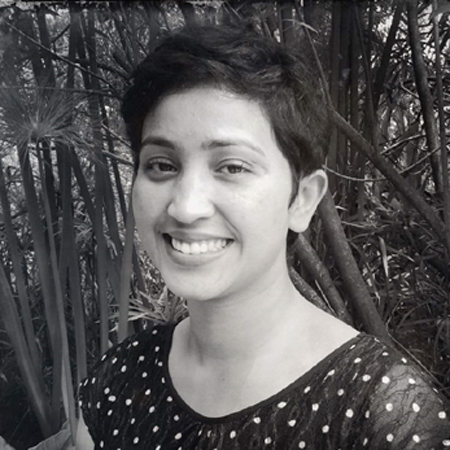Columns
The media’s portrayal of Dalits is incomplete
Narratives of Dalits as just being victims of caste hierarchy ignores many stories of resistance.
Sarita Pariyar
In recent times, the media coverage on caste questions appears to be increasing. Bishwo Bhakta Dulal ‘Aahuti’ writes a column in Kantipur Daily. And Nayapatrika, an influential newspaper has published two special Dalit supplements: International Day for the Elimination of Racial Discrimination on March 21, 2019 and Madhesi Dalit women on January 4, 2020. While it is welcome that the mainstream media seems to be open to Dalit voices, they often show incompleteness in depicting Dalit lives. The media narrative of Dalits as just being victims of caste hierarchy ignores many inspiring and powerful stories of resistance.
Undoubtedly, Dalits have been and still are victims of discrimination. However, victimhood narratives emphasise helplessness and deplorable situations, providing only a partial picture. They encourage Dalits to believe in one’s fate. Such narratives obscure how Dalits find ingenious ways to overcome their oppression. Because of their resilience, Dalits have come so far despite facing one of the worst human rights violations in human civilisation.
Resistance is a central part of Dalit lives. In the journal Madesh Adhyan, anthropologist Madhu Giri analyses four types of Mushar resistance: hidden resistance, collective resistance by a community, political parties resistance, and personal resistance.
Hidden resistance is the weapon of peasants to refuse invisibly and indirectly. Powerless peasants cannot resist directly against the powerful because the cost of it would be too high, says Yale political scientist James C Scott. Cursing landlord, planting rootless paddy, and refusing work at landlord’s place are examples of a hidden resistance by Mushar.
Collective resistance has taken place in different period of times in Nepal, such as in the movement against transporting dead cattle, and entering Shaileshwori and Pashupati temple.
Similarly, the ‘people’s war’ was the collective political resistance of Dalits along with other communities. Most of the Dalits and oppressed peoples sacrificed their lives with the hope of living dignified life by refusing all forms of oppression and discrimination.
Interviewing political parties' Dalit leaders for my MA thesis dissertation was an eye-opening experience to learn about powerful personal resistance stories. Most of them believed that resistance is the most important quality of a leader. The often unsung heroes felt empowered while telling me their tales of resistance. Their eyes and hands spoke of their bravery.
In a recent Sudurpashchim visit, I heard the inspiring personal resistance story of Parwati Bhul. A resident of Baitadi district, Parwati, is always on time for ward meetings, often being the first one to arrive. The meeting secretary would put an absent member’s name in the beginning and write her name at the end in the minutes. When this happened for the sixth time, Parwati rightly asked the secretary, ‘Why do you write the name of an absent person in the beginning and the name of a person who is present last?’ From that moment, the secretary started listing Parwati's name in the beginning. Dalit leaders are resisting traditions that always define Dalits to be at the bottom, whether in a meeting or in society.
Laxmi Bishwokarma, from Darchula, is known as ‘Mukkharkatti’, meaning ‘loudmouth’ because she refused to agree that Dalits cannot have a god’s name. She insisted on the name Laxmi. What’s more, if some non-Dalit leaders addressed her with a ‘Ta’ (traditionally used for someone who has lower status), she had no qualms about addressing them the same way.
In a Sudurpashchim province where caste-based discrimination is deeply embedded, it is difficult to imagine someone, particularly a Dalit woman who hopes for career advancement, to say ‘Ta’ to ‘Raja Saheb’—particularly Thakuri senior leaders. In her article ‘Resist hierarchy, ladies’, Seira Tamang writes: ‘To understand how hierarchies are made by language, think about who gets to use ‘timi’ and who is expected to use ‘tapai’. Dalits have to face this kind of language violence every day.
Coming back to Laxmi, she insists that questions of dignity cannot be compromised for political benefit. Dalits like Laxmi joined the communist party primarily to annihilate the caste system. Laxmi finds it disturbing when non-Dalit communist leaders do not follow party protocol of seniority, especially in addressing Dalit women leaders. For example, Laxmi was the proportional representative candidate from the Nepal Communist Party in the 2017 election, but she was not introduced as the candidate in the party’s political assembly, which she finds highly disrespectful. She has resisted such discriminations.
What’s more, Laxmi resists being called just a Dalit leader. She often gets invited to political events as a Dalit leader. She calls out and challenges non-Dalit leaders to stop calling her as a Dalit leader because she serves everyone in her village. ‘If I am addressed as a Dalit leader, why isn't a Brahmin man addressed as a Brahmin leader?’ she complains. When she raises such questions, others say ‘Look how smug the Dumini's daughter has become’. They think power has gone to the head of a Dalit woman.
Parvati’s and Laxmi's stories are examples of powerful Dalit resistance. These are everyday stories of nonconformity and should be highlighted by mainstream media. The media should make an honest and complete effort to represent caste issues by not only highlighting the struggles of Dalits but by presenting their acts of defiance and will to push back, too.
***
What do you think?
Dear reader, we’d like to hear from you. We regularly publish letters to the editor on contemporary issues or direct responses to something the Post has recently published. Please send your letters to [email protected] with "Letter to the Editor" in the subject line. Please include your name, location, and a contact address so one of our editors can reach out to you.




 7.12°C Kathmandu
7.12°C Kathmandu













%20(1).jpg&w=300&height=200)

